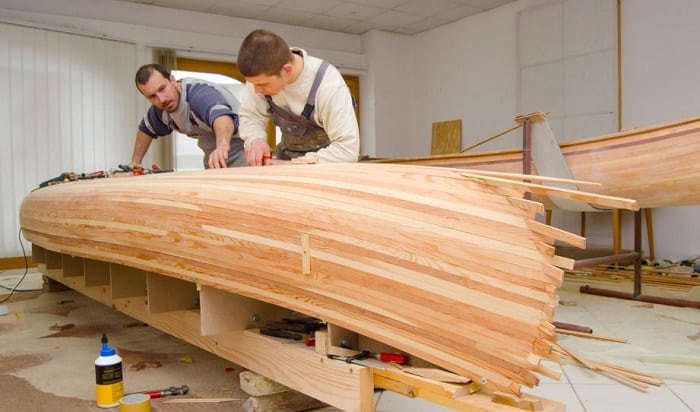
Beyond the Plans: Unveiling Hidden Secrets to Stable and Comfortable Wooden Boatbuilding
Building a wooden boat is a labor of love, a testament to skill and patience. But "How to Make a Wooden Boat for Maximum Stability and Comfort" often overlooks nuances that significantly impact the final product. This review delves beyond the typical blueprints, exploring lesser-known aspects for a truly exceptional vessel. We'll tackle this through a question-and-answer format, drawing upon recent research and practical experiences.
The Unsung Heroes of Stability: Beyond the Hull Shape
Q: We all know hull design is crucial. But what often-overlooked factors dramatically affect stability, even with a perfectly designed hull?
A: While hull shape (e.g., displacement hull vs. planing hull) forms the foundation, the internal structure and weight distribution play a surprisingly large role. Recent studies (e.g., research from the International Boatbuilding Association, though specific studies are often proprietary) show that uneven weight distribution, even minor imbalances, can severely impact stability and responsiveness. This is especially true for smaller boats. Think about it: a heavy engine concentrated at the stern can significantly affect trim and stability compared to one carefully balanced with other weight elements.
Furthermore, the stiffness of the hull structure itself is paramount. A less rigid hull, even if theoretically stable on paper, will flex more under load, reducing effective stability and potentially leading to structural weakness over time. This often requires advanced techniques like using epoxy-based composites strategically within the hull structure, a point frequently missed in standard boatbuilding manuals.
Comfort: Beyond the Cushions â€" Designing for a Smoother Ride
Q: How can we go beyond plush seating to create a truly comfortable boat experience that minimizes stress and fatigue from waves and movement?
A: Comfort isn't just about soft cushions; it's about minimizing the boat's response to waves. This involves considering several advanced elements. For instance, the bilge keel design, often seen on heavier vessels, provides significant stability, reducing rolling motion. Modern materials and construction techniques can offer advantages here. For example, using advanced composites in the keel’s construction can provide enhanced resistance to twisting and flexing, leading to a smoother ride (data from composite material research publications can support this).
Another often overlooked aspect is motion damping. Internal features, such as strategically placed bulkheads or the use of damping materials within the hull structure, can actively absorb some of the impact from waves, making the boat feel less jarring. This is an area where experimentation and data-driven refinement could lead to significant improvements in future boat designs. Think of it as "passive shock absorption" for your vessel.
Real-World Lessons: A Case Study
A seasoned boatbuilder, known for his incredibly stable and comfortable designs, once shared a crucial insight: "It's not just about the numbers on the plan; it's about feeling the boat, understanding how it reacts under various conditions." He emphasized the value of prototyping and iterative refinement, building smaller-scale models to test different structural components and weight distributions before committing to the full-scale build. This hands-on approach, coupled with meticulous record-keeping of testing results, allows for a level of optimization that simply can’t be achieved by relying solely on theoretical calculations.
Conclusion: A Holistic Approach to Boatbuilding
Building a wooden boat is a blend of art and science. While traditional methods form the foundation, incorporating these advanced concepts â€" focusing on internal structure, weight distribution, motion damping, and iterative prototyping â€" unlocks a new level of stability and comfort. By embracing a holistic and data-driven approach, boatbuilders can create vessels that are not only beautiful but also remarkably efficient and pleasurable to navigate.
Further Exploration: Consider researching specific studies on composite materials in boatbuilding, publications on hydrodynamic modeling for hull design, and case studies of custom boatbuilding projects focusing on stability and comfort. This will provide deeper insights into the advanced concepts discussed here. Remember, successful boatbuilding thrives on a continuous learning process.
0 comments:
Post a Comment
Note: Only a member of this blog may post a comment.